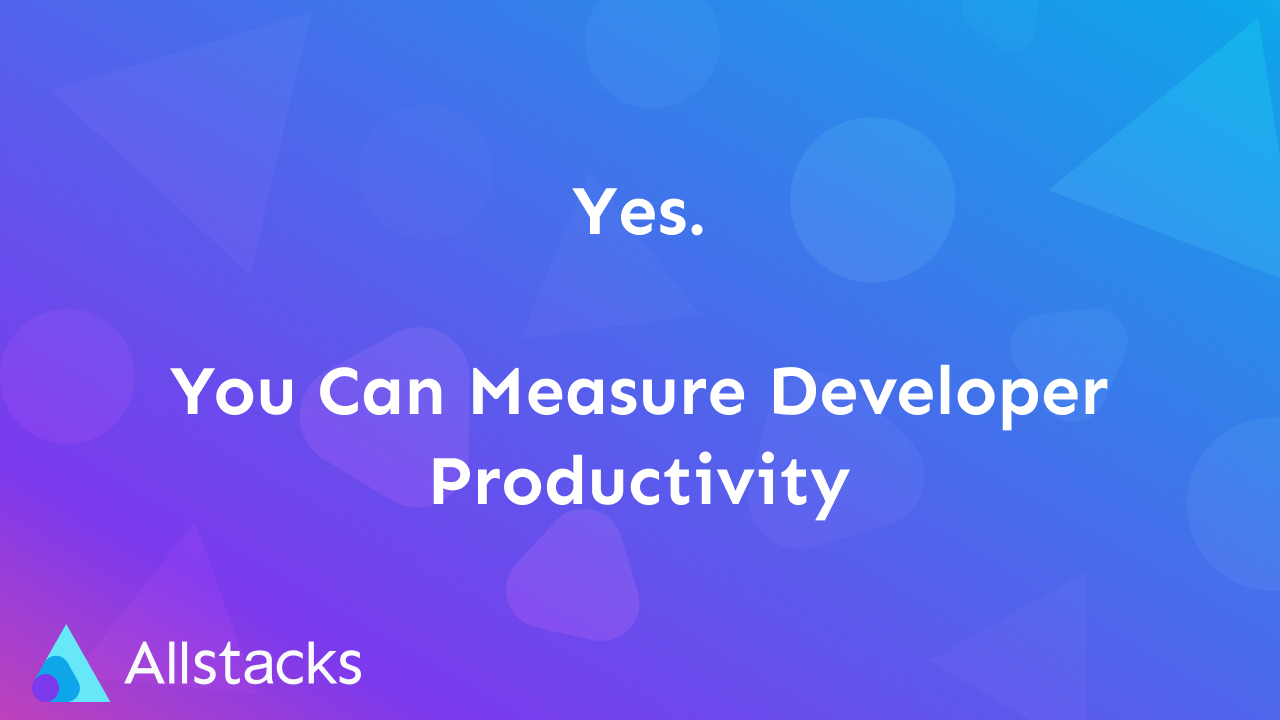.png)
Software Engineering Intelligence
-
Intelligence Engine
On-demand exhaustive AI-analysis
-
Engineering Investment
Complete visibility into time & dollars spent
-
360º Insights
Create meaningful reports and dashboards
-
Project Forecasting
Track and forecast all deliverables
DevEx
-
Developer Surveys
Create and share developer surveys
Software Capitalization
-
R&D Capitalization Reporting
Align and track development costs
"Yes, you can measure software developer productivity"
Jeremy Freeman, CTO at Allstacks, provides his perspective on the importance of measuring developer productivity following a recent McKinsey & Company article.

"Yes, you can measure software developer productivity"
That's the title of one particularly controversial article from McKinsey & Company. And it's true, you can measure productivity. However, it is significantly more complex than simply finding the right number. Dismissing measurement and productivity out of hand is actually harmful to your organization.
Measuring engineering productivity is not as simple as picking a number and telling engineers they need to hit that number. Many people take that to mean it’s not possible to measure it. While building software is complex, it’s totally possible to measure productivity.
The reality is that the leaders in the software development industry are becoming increasingly data-driven and those that aren't will get left behind. Nearly every other function in an organization is leveraging data to measure productivity. This includes creative roles like UI design, content marketing, and sales. While some roles – like sales – directly tie back to the key business metrics – like revenue – engineering and product have a more convoluted link to those business outcomes. However, the link is still there.
To see that link, look back at the origins of software companies. Businesses were established around software development because it was more efficient to do jobs with software compared to the ways they were used to in the past. As engineers, we were hired to help people do jobs quicker and easier. Companies that embraced the software revolution were able to out-compete because of their low Cost-Per-Unit-Value-Delivered [CPUVD]. So, it can be argued that software organizations and companies exist DUE to productivity metrics and improvements. It should be obvious that the same forces that drove us to automate those jobs are still driving businesses to today.
In the software industry, organizations that are able to lower their CPUVD will survive, organizations that ignore it, will ultimately get out-competed and cease to exist. While there will likely never be a true way to directly measure CPUVD in one number, measuring the signals that prevent us from shipping value is absolutely possible. We, as technology leaders, are already looking at so many signals and balancing a very complex equation to ensure that we have happy, productive, engaged, on-budget, and relevant teams. Identifying and including data should be embraced as strongly as the next development philosophy, development tool, or working model.
As product and technology leaders, we have an obligation to build great organizations, great software, and ultimately great businesses. Productivity measurement is simply another industry shifting methodology we need to embrace in order to build those things. If we don’t, we will be displaced by those that do.

